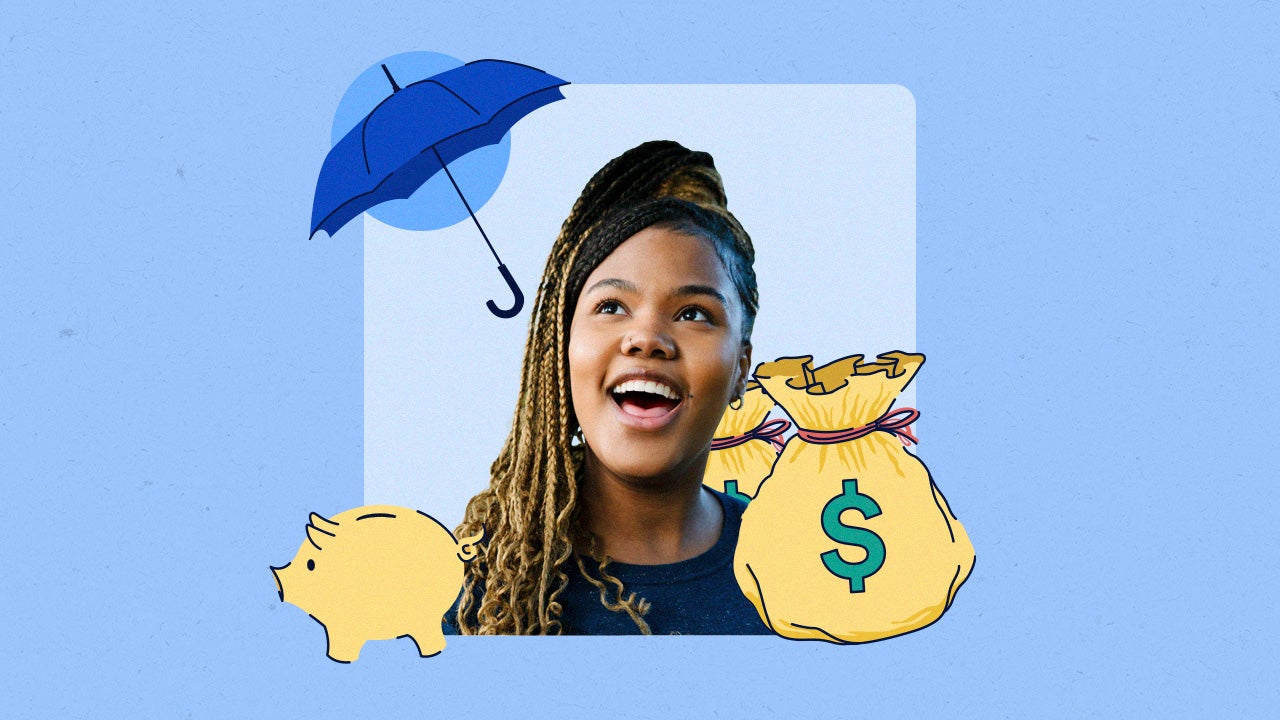8 tips for paying off student loans fast

Key takeaways
- The average student borrower takes 20 years to pay off their student loans, but there are ways to shorten this timeline.
- Making additional payments, setting up automatic payments and refinancing are all effective strategies.
- Do your research and assess which methods work best for your schedule and lifestyle.
Student loan debt can feel overwhelming and take decades to pay off. The standard federal student loan repayment term is 10 years, but the average student borrower takes 20 years to fully repay their debt. Fortunately, there are many options to shorten this timeline to get out of debt quicker.
Paying off your student loans quickly means you’ll be able to invest in yourself, such as retirement, homeownership and savings. Getting rid of a loan also lowers the amount of debt you have relative to your income, which will help you qualify for other funding. Plus, the less you owe, the less interest you pay.
Here are some of the best ways to pay off your student loans.
1. Stick to a budget
Planning and understanding your monthly cash flow can make it easier to know where to cut back and reallocate those funds toward your student loans.
“If you’re trying to pay down your student loans faster, one of the best ways to reach your goal is to develop a budget,” says Jessica Ferastoaru, student loan counselor at Take Charge America. “If you’re able to meet a savings goal each month by sticking to a budget, you can use that money to pay down your student loans.”
Many proactive steps can help keep your budget on track. For instance, obtaining a part-time job can generate extra income to pay bills, including your student loans. Avoiding impulse spending can also help keep your budget in line. Automating payments for bills and savings deposits from your paycheck is another valuable step that can help ensure money is not spent elsewhere.
Assess your spending habits and your ability to keep a budget. If you find it hard to maintain a budget, use a student budget calculator to help you get on track and stay there.
The debt snowflake method involves making smaller, more frequent payments on your debt to slim it down. Using methods such as these can help keep your budget and debt repayment plan on target.
2. Pay more toward principal
Allocating more money specifically toward the principal owed on your student loan reduces the overall amount of the outstanding debt upon which the interest is calculated. This reduces the interest you’ll pay over the life of the loan, thereby reducing the cost of the loan itself, getting you out of debt more quickly.
“Just be sure to advise your loan servicer to apply your extra payment to your principal balance, rather than placing your account in a ‘paid ahead’ status,” says Ferastoaru. “This will allow you to pay down your principal balance more quickly and save money on interest.”
To help accomplish this goal, try allocating any unexpected lump sums of money you receive to student loan principal repayments. This includes financial windfalls, tax refunds or monetary gifts you receive.
3. Take advantage of tax deductions
The federal government offers a student loan interest deduction on your taxes for interest paid during the year on qualified loans. The law allows you to deduct up to $2,500, depending on your adjusted gross income. The deduction is available for both federal and private student loans.
You can claim this tax deduction if you’re legally required to pay interest on a qualified student loan and your filing status is not “married filing separately.” This program also has adjusted gross income limits, which are set annually. You do not need to itemize to claim this deduction.
“It’s a good idea to speak with a tax advisor to make sure you’re taking advantage of any relevant tax benefits related to your education,” says Ferastoaru.
4. Make additional payments
Biweekly payments
Another strategy is to pay biweekly rather than monthly. This approach involves making payments on your student debt every two weeks, as opposed to once a month. By doing this, you are making 26 half-payments annually, which is the equivalent of 13 full monthly payments per year. In other words, you are making an extra payment on the debt each year.
Interest payments
Another factor that can impact your student loan debt is interest capitalization. This occurs when unpaid interest on your loan is added to the principal balance, increasing the overall balance of the loan debt. Moving forward, the lender charges and calculates interest on the new balance.
Depending on the specific type of loan you have, unpaid interest may be added to your loan balance where you’ve previously deferred payments or your loan was in forbearance. This is particularly true with unsubsidized federal loans, which begin accumulating interest as soon as they are disbursed.
At the end of deferment or forbearance, the unpaid interest is capitalized. Interest may also capitalize after a grace period on loan repayments has ended. To avoid having interest capitalized on your loan debt, it can be helpful to make interest payments even when your loan is in deferment, forbearance or during grace periods.
5. Set up automatic payments
Establishing automatic payments with a lender may have the added benefit of reducing the interest rate on your student loan. Some lenders offer a .25 percent discount on interest to borrowers who set up automatic payments.
It may be tempting to apply any money left over at the end of the month to your student loans. If your budget is tight and you don’t tend to have extra at the end of the month, doing so may prove difficult and could mean slowing your payment pace.
If you’re unsure how much more you can devote to your student loans every month, look at your budget to determine the amount you can afford. Then set up automatic payments for the beginning of the month. That way, you won’t accidentally spend that money. Take care when setting your payment amount to avoid spreading your budget too thin.
6. Ask your employer about repayment assistance
Many employers have begun offering student loan repayment assistance or tuition reimbursement. Some employers, including Starbucks and Walmart, offer a free college education for workers who sign up for degree programs within a chosen network of courses and schools.
Employers can contribute up to $5,250 annually toward an employee’s college tuition or student loan repayment assistance through 2025. This benefit is not taxable income for the employee, a major benefit for workers pursuing higher education while continuing to work. Employers can deduct the expense, too — so everyone benefits.
Check your employee manual or speak with your HR department to see what loan repayment or tuition assistance options are available at your company.
7. Apply for loan forgiveness
Forgiveness programs can eliminate all or part of your student loan debt, but each program has unique requirements and strict approval standards:
- Public Service Loan Forgiveness: To be eligible, you must be a government or nonprofit employee in a full-time public service position, have Direct Loans or have consolidated other federal student loans to qualify and have made 120 qualifying payments under an income-driven repayment plan. Getting approved for the program is difficult, so read the details carefully to stay on track.
- Teacher Loan Forgiveness: To qualify, you must have an eligible loan under the Direct Loan program or Federal Family Education Loan program and teach full-time for five consecutive years in a low-income school or educational service agency. At least one of those years must be after the 1997-98 academic year. Depending on your specialty, the program forgives up to $5,000 or $17,500.
- Income-driven repayment forgiveness: It’s possible to have a portion of your student loans forgiven if you’re on an income-driven repayment plan. Once the 10-, 20- or 25-year repayment term ends with these programs, any remaining balance is forgiven. The forgiven amount is not taxable if you hit the end of your repayment period before 2026.
8. Consider refinancing
Refinancing your student loans could help you pay down your loans faster by helping you obtain a lower interest rate, a shorter repayment period or both. This option may not be available right after graduation unless you’ve managed to build a solid credit history or have a creditworthy cosigner.
If not, it can take some time to establish your credit history to meet the eligibility criteria refinance lenders have, such as having a stable income or employment history. Before refinancing, shop around to see which lender offers you the best rates. You can also use a student loan refinance calculator to understand the numbers and whether it’s the right move.
Considering refinancing? It’s important to keep in mind that this decision may lead you to lose certain benefits, such as those received through student loan forgiveness programs and income-driven repayment programs.
Bottom line
When considering how to pay off student loans fast, determine the best approach for your finances and personal goals. Student loan debt can be a significant financial burden, but there are steps you can take to eliminate yours more quickly. Some options are widely available, like automatic payments, while others require a particular job or financial situation.






